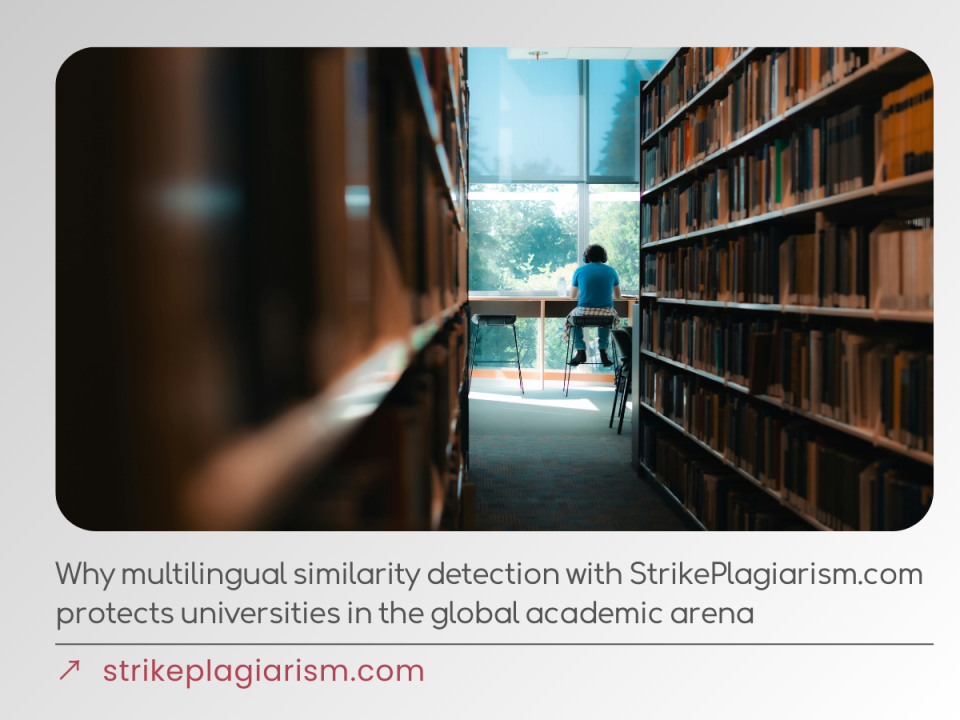Higher education is now indisputably global. Students travel across continents, submit work in multiple languages, and participate in international research collaborations. This diversity enriches academic life but also creates new risks. When a thesis written in Spanish is translated into English and submitted abroad, or when a Chinese article quietly reappears in German, traditional plagiarism systems often fail to spot the overlap. The result? Universities risk validating work that is neither original nor academically honest.
How StrikePlagiarism.com responds
Our mode “Search for similarities in translation” is designed precisely for this global reality. By integrating a machine learning-based semantic translation algorithm, StrikePlagiarism.com identifies concealed borrowings even when the text has shifted languages. Supporting 109 language combinations, the system compares translated content with vast repositories, including academic databases, institutional archives and online sources. Educators are then provided with a transparent Similarity Report, highlighting parallel passages across different linguistic versions.
The benefits for universities and educators
- Global protection: Institutions no longer have to worry that students are exploiting language gaps to bypass integrity checks.
- Consistency in standards: International and domestic submissions can be assessed with equal rigour, ensuring fairness across all cohorts.
- Enhanced reputation: Universities that embrace multilingual similarity detection demonstrate leadership in protecting academic credibility on a global stage.
- Confidence for educators: Professors and reviewers can rely on evidence-based reports rather than intuition, saving time and strengthening decision-making.
A new standard for academic integrity
As mobility, exchange programmes and multilingual publishing expand, plagiarism in translation can no longer be ignored. StrikePlagiarism.com empowers institutions to lead with integrity, reassuring stakeholders that every paper – regardless of its language of origin – is held to the same ethical standard.
In a competitive academic arena, where reputation is inseparable from trust, multilingual similarity detection is not just a tool. It is a safeguard for the credibility of higher education worldwide.
Why It Matters
Academic credibility is now a global currency. In this context, multilingual similarity detection is no longer optional — it’s essential. Without the ability to uncover plagiarism across languages, institutions risk accrediting research that fails the test of originality simply because it crossed a linguistic border.
StrikePlagiarism.com addresses this vulnerability with purpose-built precision. By identifying translated borrowings at a semantic level, it ensures that every submission — whether local or international — is judged by the same academic criteria.
This matters because global education must be governed by global standards. Universities that embrace multilingual detection are not just protecting themselves — they are setting the tone for integrity in an interconnected academic landscape. And in doing so, they build the trust that underpins reputation, collaboration, and excellence worldwide.


comment